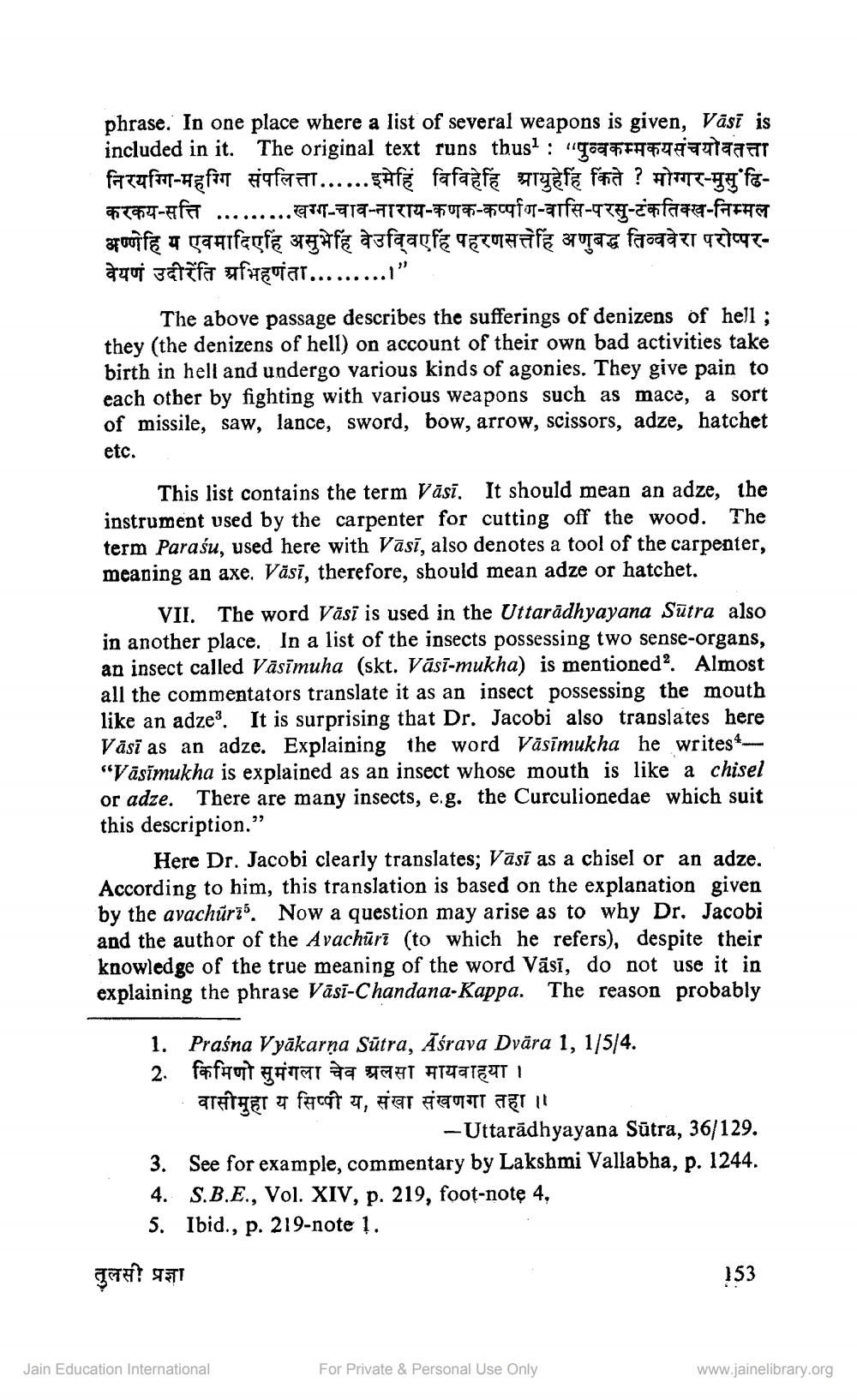________________
phrase. In one place where a list of several weapons is given, Vasi is included in it. The original text runs thus? : "To ThaiTaar farzaff-Refort fatal...... safi fafazla aryè fa faid? TT-HT'fa78294-Afa .........1-717-71774-77019-4509fTt-a7f2-924-zwfaqe-fFACT अण्णेहि य एवमादिएहिं असुभेहिं वेउविवएहिं पहरणसत्तेहिं अणुबद्ध तिव्ववेरा परोप्परagoi gatifa afwariar.......
The above passage describes the sufferings of denizens of hell ; they (the denizens of hell) on account of their own bad activities take birth in hell and undergo various kinds of agonies. They give pain to each other by fighting with various weapons such as mace, a sort of missile, saw, lance, sword, bow, arrow, scissors, adze, hatchet etc.
This list contains the term Vāsī. It should mean an adze, the instrument used by the carpenter for cutting off the wood. The term Paraśu, used here with Vāsī, also denotes a tool of the carpenter, meaning an axe. Väsī, therefore, should mean adze or hatchet.
VII. The word Väsi is used in the Uttarādhyayana Sūtra also in another place. In a list of the insects possessing two sense-organs, an insect called Väsīmuha (skt. Vāsī-mukha) is mentioned. Almost all the commentators translate it as an insect possessing the mouth like an adze. It is surprising that Dr. Jacobi also translates here Vāsī as an adze. Explaining the word Väsīmukha he writes "Väsīmukha is explained as an insect whose mouth is like a chisel or adze. There are many insects, e.g. the Curculionedae which suit this description."
Here Dr. Jacobi clearly translates; Vāși as a chisel or an adze. According to him, this translation is based on the explanation given by the avachūrió. Now a question may arise as to why Dr. Jacobi and the author of the Avachūrī (to which he refers), despite their knowledge of the true meaning of the word Vásī, do not use it in explaining the phrase Vasi-Chandana-Kappa. The reason probably
1. Praśna Vyäkarna Sūtra, Aśrava Dvära 1, 1/5/4. 2. fafaut gaita gay #TUTIEAT I वासीमुहा य सिप्पी य, संखा संखणगा तहा ।।
-Uttarādhyayana Sūtra, 36/129. 3. See for example, commentary by Lakshmi Vallabha, p. 1244. 4. S.B.E., Vol. XIV, p. 219, foot-notę 4, 5. Ibid., p. 219-note 1.
तुलसी प्रज्ञा
153
Jain Education International
For Private & Personal Use Only
www.jainelibrary.org




